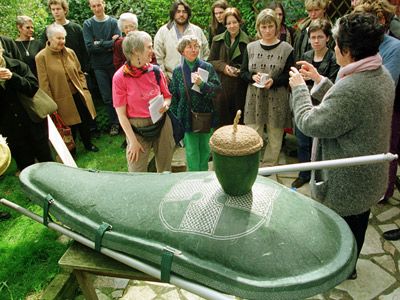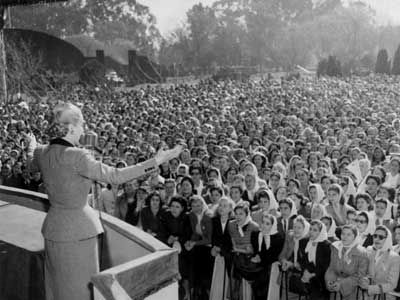Public enemy number one John Dillinger evaded the police and intrigued the masses for months. He and his associates robbed a long string of banks and several police stations and killed one police officer. The infamous 1930s gangster who escaped from jail twice was definitely cunning, but a brothel madam was his downfall. Anna Sage (née Ana Cumpanas) tipped off the FBI, and officers found Dillinger leaving a movie theater with Sage and his girlfriend on July 22, 1934. The gangster sensed he was being followed and took off, pulling out a revolver as he ran. He was surrounded and shot, with the fatal bullet going through his neck and exiting just under his right eye. He fell face-first to the ground in a pool of blood [source: FBI].
In the hours and days after his death, crowds gathered in the streets and at the morgue to glimpse one of the most notorious gangsters America had known. In fact, police had trouble keeping people out of the morgue, and at least two unauthorized groups of medical students came to collect a memento of the dead: a death mask made from a plaster mold. Only one medical practitioner and his colleague were allowed to make a mask, a dentist hoping to sell his new plastic substance to the FBI. He made Dillinger's cast from this plastic material, and a plaster copy was sent to sit in J. Edgar Hoover's office [source: History Channel].
Advertisement
The mask captured every detail of Dillinger's face -- the bullet wound, the scrapes from where he had hit the pavement, the bloating and swelling from the heat and pooling blood, and even the tell-tale signs of underground plastic surgery [source: History Channel].
But why make a death mask in the first place? How many other masks are there, and how long have they been around? Perhaps you'll be inspired and learn how to make a death mask (but not of you, of course, because you'll be dead).



